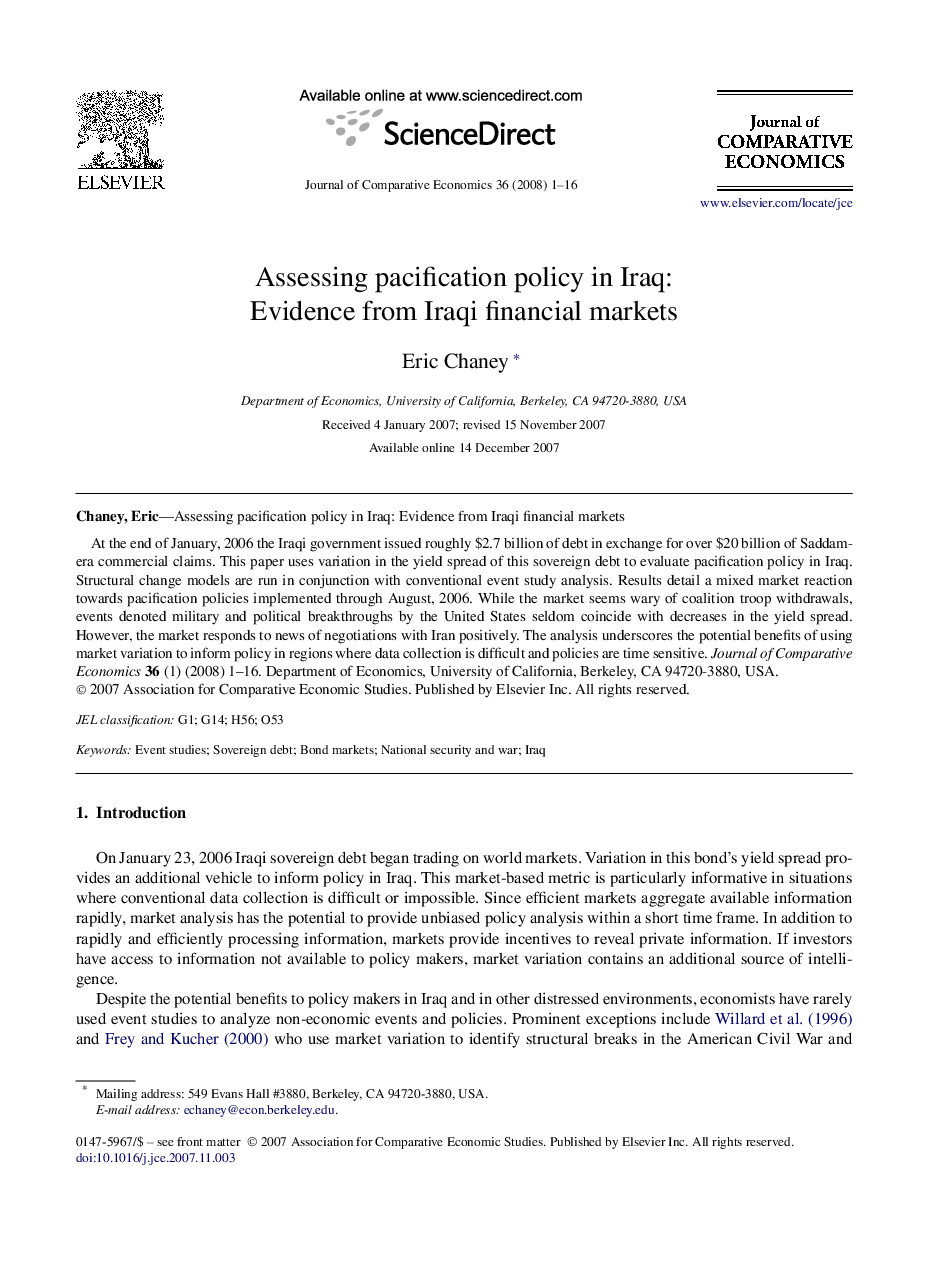| Article ID | Journal | Published Year | Pages | File Type |
|---|---|---|---|---|
| 5092598 | Journal of Comparative Economics | 2008 | 16 Pages |
Abstract
At the end of January, 2006 the Iraqi government issued roughly $2.7 billion of debt in exchange for over $20 billion of Saddam-era commercial claims. This paper uses variation in the yield spread of this sovereign debt to evaluate pacification policy in Iraq. Structural change models are run in conjunction with conventional event study analysis. Results detail a mixed market reaction towards pacification policies implemented through August, 2006. While the market seems wary of coalition troop withdrawals, events denoted military and political breakthroughs by the United States seldom coincide with decreases in the yield spread. However, the market responds to news of negotiations with Iran positively. The analysis underscores the potential benefits of using market variation to inform policy in regions where data collection is difficult and policies are time sensitive. Journal of Comparative Economics 36 (1) (2008) 1-16.
Related Topics
Social Sciences and Humanities
Economics, Econometrics and Finance
Economics and Econometrics
Authors
Eric Chaney,
